 Who is the blogger?
Who is the blogger?
To see a simple English version of reviews about some of the movies, click on the ESL section of Midnight Oil.
Entries by Catherine Savard (118)
Around the World in Eighty Days (1956) and Ocean's Eleven (1960)
Phileas Fogg, Jules Verne and the Rat Pack: Odd Bedfellows
Frank Sinatra’s Rat Pack pulls one over on Vegas with style and flare in Ocean’s11 and David Niven is Phileas Fogg while his co-star, Cantinflas, is not Passepartout in Around the World in 80 Days.
 It was an act of God – a thunderstorm, one of several that came through the area. On Saturday Night while I was watching my movies on SNAM, the power went out. I had gone to bed before the end of the second feature, Ocean’s 11, trusting that my VCR would pick up the end of the movie for me to watch the next day.
It was an act of God – a thunderstorm, one of several that came through the area. On Saturday Night while I was watching my movies on SNAM, the power went out. I had gone to bed before the end of the second feature, Ocean’s 11, trusting that my VCR would pick up the end of the movie for me to watch the next day.
It was not to be so. The next morning I discovered that the VCR had not captured the end of the movie and that I would probably never see the grand finale of the heist. Rats! We were leaving for the annual cottage holiday, so it did not seem reasonable for me to trot down to the classic video rental store downtown to see if I could find Frank Sinatra and his pals “doing Vegas” in their own inimitable style.
So was born the idea that maybe I should see the updated version of Ocean’s 11 with George Clooney and Brad Pitt. I watched Clooney and company do their thing with the Vegas casinos and enjoyed the ride. My husband was actually interested in watching the rental of this one with me. Finally, a film we could agree to watch together - a truly fortuitous event!
It was not the same movie . That was the conclusion I reached after I invested the two admittedly entertaining hours in viewing the new guys pull off their version of the ultimate sting operation in Las Vegas . There were certainly comparisons that could be made between the original and the update of Ocean’s 11, but the plots, the players and the underlying purpose of the action are all very different in the two versions.
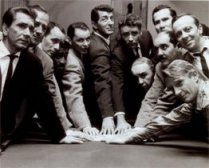 The original version with Frank Sinatra does capture the look and feel of a bygone era in “old” Las Vegas . You get the picture of what was considered the ultimate in suave in that day with Sammy Davis Jr. and Dean Martin making a smooth delivery on their musical numbers. It looks like one big lark for the old army buddies (well they are former WWII paratroopers) with all of the friendly camaraderie that goes along with it. The spirit of easy camaraderie that is portrayed on the screen is more than likely linked to the fraternity felt in real life between some of the actors. Frank Sinatra’s real life buddies, a.k.a. the Rat Pack, made a number of movies together. They didn’t even have to leave their gigs in Vegas to do this one. One of the things that the old and the new versions of Ocean’s 11 had in common was that it looked like the actors were having fun. It probably was the case that both movies were actually fun to make.
The original version with Frank Sinatra does capture the look and feel of a bygone era in “old” Las Vegas . You get the picture of what was considered the ultimate in suave in that day with Sammy Davis Jr. and Dean Martin making a smooth delivery on their musical numbers. It looks like one big lark for the old army buddies (well they are former WWII paratroopers) with all of the friendly camaraderie that goes along with it. The spirit of easy camaraderie that is portrayed on the screen is more than likely linked to the fraternity felt in real life between some of the actors. Frank Sinatra’s real life buddies, a.k.a. the Rat Pack, made a number of movies together. They didn’t even have to leave their gigs in Vegas to do this one. One of the things that the old and the new versions of Ocean’s 11 had in common was that it looked like the actors were having fun. It probably was the case that both movies were actually fun to make.
 Another thing that both versions had in common were the clothes: not that they wore the same clothes, mind you. The costumes had the effect of making a statement about the era. Chic in 1960 with all of those skinny ties and billowing satin evening dresses looked quite different than chic in 2001. They say that clothes make the man. I found that to be the case in the 2001 version with George Clooney as alpha male Danny Ocean, Brad Pitt in the role of Rusty Ryan, the number one, Andy Garcia as the take-off on the menacing eastern despot, Terry Benedict, and Elliott Gould as the over the top and totally outrageous Reuben Tishkoff. In each case, clothing contributed significantly to character development. Costume designer Jeffrey Kurland went on for quite a while in the supporting interviews on the CD-ROM of the 2001 version about how he obtained the all- important effect of making Brad Pitt “shine” in his ultra sophisticated look as the super suave conman and card shark..
Another thing that both versions had in common were the clothes: not that they wore the same clothes, mind you. The costumes had the effect of making a statement about the era. Chic in 1960 with all of those skinny ties and billowing satin evening dresses looked quite different than chic in 2001. They say that clothes make the man. I found that to be the case in the 2001 version with George Clooney as alpha male Danny Ocean, Brad Pitt in the role of Rusty Ryan, the number one, Andy Garcia as the take-off on the menacing eastern despot, Terry Benedict, and Elliott Gould as the over the top and totally outrageous Reuben Tishkoff. In each case, clothing contributed significantly to character development. Costume designer Jeffrey Kurland went on for quite a while in the supporting interviews on the CD-ROM of the 2001 version about how he obtained the all- important effect of making Brad Pitt “shine” in his ultra sophisticated look as the super suave conman and card shark..
 I am afraid that things did not work out so well for poor Julia. As the only lady in the ensemble and the focus of much attention, something dreadful seems to have happened on the way from the dressing room to the movie set. Whether it was the make-up, the costume design, the way the camera shot her or just the way she was feeling that day, Julia Roberts just doesn’t look all that great in this movie. But then, I thought that Angie Dickinson playing Danny Ocean ’s long-suffering wife, Beatrice, did not come off all that well either in the original. In that case I think that the difficulties with the portrayal of Beatrice had less to do with the mechanics of how the scenes were shot and more to do with how the part was written.
I am afraid that things did not work out so well for poor Julia. As the only lady in the ensemble and the focus of much attention, something dreadful seems to have happened on the way from the dressing room to the movie set. Whether it was the make-up, the costume design, the way the camera shot her or just the way she was feeling that day, Julia Roberts just doesn’t look all that great in this movie. But then, I thought that Angie Dickinson playing Danny Ocean ’s long-suffering wife, Beatrice, did not come off all that well either in the original. In that case I think that the difficulties with the portrayal of Beatrice had less to do with the mechanics of how the scenes were shot and more to do with how the part was written.
 Critics and moviegoers alike seem to say that both of these versions of Ocean’s 11 capture the “epitome of cool”. It’s just that what is “ultra cool” looks different 40 years apart. Gambling and sex remain stable, the sophistication of security systems goes up while the rate of smoking plummets and the dress code varies according to the fickle winds of fashion. The “super cool” of yesteryear looks somewhat quaint and slightly laughable as will today’s epitome of sophistication by the time we get to tomorrow.
Critics and moviegoers alike seem to say that both of these versions of Ocean’s 11 capture the “epitome of cool”. It’s just that what is “ultra cool” looks different 40 years apart. Gambling and sex remain stable, the sophistication of security systems goes up while the rate of smoking plummets and the dress code varies according to the fickle winds of fashion. The “super cool” of yesteryear looks somewhat quaint and slightly laughable as will today’s epitome of sophistication by the time we get to tomorrow.
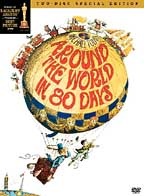 Phileas Fogg from Jules Verne’s original novel, Around the World in 80 Days, was certainly a man ahead of his time. The very popular novel’s reputation probably rested very much on the colourful explorations of exotic destinations that appealed to the modern-minded people of that era. The 1956 movie of the same name seems to rest its reputation on the same kind of appeal to middle-America plus the attraction of multiple cameo appearances of famous actors as rounded up by the producer, Michael Todd. According to the Interviews, convincing big name actors to appear as cameos in the film seems to have been one of Mr. Todd’s chief talents.
Phileas Fogg from Jules Verne’s original novel, Around the World in 80 Days, was certainly a man ahead of his time. The very popular novel’s reputation probably rested very much on the colourful explorations of exotic destinations that appealed to the modern-minded people of that era. The 1956 movie of the same name seems to rest its reputation on the same kind of appeal to middle-America plus the attraction of multiple cameo appearances of famous actors as rounded up by the producer, Michael Todd. According to the Interviews, convincing big name actors to appear as cameos in the film seems to have been one of Mr. Todd’s chief talents.
The cast list is ridiculously long. It includes all manner of persons from Sir John Gielgud to John Mills, from Marlene Dietrich to Shirley MacLaine, and from Buster Keaton to Red Skelton. David Niven is entirely memorable as the quintessential modern man, Phileas Fogg, time piece collector and whist player extraordinaire. Niven is definitely a star due to the amount of time he occupies the prime place onscreen, but in this film he definitely shares the firmament with a starry host.
 During the Interviews, director Michael Anderson tells a funny little story about Charles Boyer, who evidently had only one acceptable side of his face to shoot to good advantage. Anderson tells the story presumably to illustrate how difficult it was on the set to manage such large amounts of talent often with such large egos in tow.
During the Interviews, director Michael Anderson tells a funny little story about Charles Boyer, who evidently had only one acceptable side of his face to shoot to good advantage. Anderson tells the story presumably to illustrate how difficult it was on the set to manage such large amounts of talent often with such large egos in tow.
 The casting directors must certainly have been busy with all of those actors milling about. The one thing that I can’t understand with regard to casting choices is that Passepartout, Fogg’s valet, is played by a Mexican actor named Cantinflas. Apparently the actor was very famous at the time. Cantinflas used no stunt doubles and did his own bullfighting scenes in the movie, amongst other remarkable things. He also gave a lot of money to the poor in Mexico City , thus making himself a national hero in Mexico during his own lifetime. However, the Mexican actor had such a thick Spanish accent (no, it’s not a French accent) that one can scarcely understand the English. It was a distraction for me.
The casting directors must certainly have been busy with all of those actors milling about. The one thing that I can’t understand with regard to casting choices is that Passepartout, Fogg’s valet, is played by a Mexican actor named Cantinflas. Apparently the actor was very famous at the time. Cantinflas used no stunt doubles and did his own bullfighting scenes in the movie, amongst other remarkable things. He also gave a lot of money to the poor in Mexico City , thus making himself a national hero in Mexico during his own lifetime. However, the Mexican actor had such a thick Spanish accent (no, it’s not a French accent) that one can scarcely understand the English. It was a distraction for me.
The effort of producing this film was monumental at the time. I would not say that the movie is remembered for being a particularly good film. It is more like watching a stream of constantly changing shapes and colours in a laser light show. It is interesting to watch for a while for the entertainment value, but it quickly fades from memory after the experience is over.
 I found the combination of these two movies on SNAM to be rather odd. The only connection that I could make out between the two features on Saturday Night at the Movies was Frank Sinatra. Sinatra had a very brief cameo in Around the World in 80 Days as the piano man in a wild west bar at one point. Apparently, Sinatra’s agreement to appear in the film opened the doors for other Hollywood stars to agree to make cameos for Todd. I suppose this shows the influence that Sinatra had at that time in Hollywood .
I found the combination of these two movies on SNAM to be rather odd. The only connection that I could make out between the two features on Saturday Night at the Movies was Frank Sinatra. Sinatra had a very brief cameo in Around the World in 80 Days as the piano man in a wild west bar at one point. Apparently, Sinatra’s agreement to appear in the film opened the doors for other Hollywood stars to agree to make cameos for Todd. I suppose this shows the influence that Sinatra had at that time in Hollywood .
While none of these films can be billed as the greatest movies ever made, I don’t really regret watching them. I only regret that I never got to see the end of the 1960 version of Ocean’s 11 with the coffin scene. The dénouement of the 2001 version with Debussy ’s “Clair de Lune” from “La Suite Bergamasque” was truly strange but satisfying during the fountain scene after the big heist. It gave those guys some real class. And class was what it was all about!
Related Reading:
- A modern day Phileas Fogg, Michael Palin (travelogues shown on TVO) recreates the journey of Around the World in 80 Days
- What I learned on my cinematic voyage around the world in 80 days – The English word “thug” comes from the Sanskrit word “thugee” – devotees of the goddess Kali who strangled their human victims as a part of cultic devotions. Ughhh!
- Finding camaraderie in the real world
- "I just found the perfect . . . " Gotta get the right look? Spending all your money on clothes?
Elmer Gantry (1960) and The Swimmer (1968)
“She’s such a hypocrite!” What a frightful thing to say about someone. How easy it is to say. Worse still, how easy it is to have someone else say it about you!
 This week on TVOntario’s Saturday Night at the Movies we were presented with two films starring Burt Lancaster. Both films explored in one way or another what happens when the inside does not match the outside of a person. “The Swimmer”, an adaptation from a short story by John Cheever, and “Elmer Gantry” from the Sinclair Lewis novel of the same name both fell into the category of “not easy, but definitely interesting” films for me.
This week on TVOntario’s Saturday Night at the Movies we were presented with two films starring Burt Lancaster. Both films explored in one way or another what happens when the inside does not match the outside of a person. “The Swimmer”, an adaptation from a short story by John Cheever, and “Elmer Gantry” from the Sinclair Lewis novel of the same name both fell into the category of “not easy, but definitely interesting” films for me.
One reviewer that I came across had read the original Sinclair Lewis novel, “Elmer Gantry”, and offered some interesting insights on differences between the film and the original book. The happenings of the movie were apparently lifted from a single chapter of the novel. The titular character as drawn by Lewis was supposed to be a much darker type of a caricature than the Gantry we meet in the film.
Gantry’s larger than life portrait in the film , complete with wide smiles, firm handshakes and lewd jokes, allows for some ambiguity. Richard Brooks wrote the screenplay and directed Burt Lancaster to his Oscar winning performance in the title role. In the novel, Gantry was actually married to Lulu at one time. This leftover from the original novel may help to explain what some find to be Lulu’s otherwise unlikely attachment to Gantry. Apparently the original Gantry was a much shiftier, unrepentant sort of egomaniac. Lancaster ’s Gantry, while an opportunist and a charlatan to the core, leaves room for some kind of human sympathy. Although not on the road to redemption by the end of the film, one feels that his adventure with Sister Sharon may have in some way impacted Gantry.
It is clear that the female evangelist, Sharon Falconer, really believes in what she preaches. She may have been taken in by her own publicity so to speak, caught up in creating her own “empires in the air”, but at least she is sincerely deluded at some level. Both the character of Sister Sharon and Jean Simmons, the actress who plays the part, can be rightly described as “luminous”.
 When near the end of the film, just before the big incendiary finish, Sister Sharon undertakes to pray for the healing of a deaf man who unexpectedly comes forward during her revival service, it is unclear whether the “healing” that takes place is genuine or not. We cast about for explanations. Skeptics probably believe it to be another sham, a part of the show like the antics of the monkey or the milk pails during previous tent meetings. Perhaps some hardened modernists like the veteran journalist Jim Lefferts wish to write it off hastily as the reversal of some sort of psychosomatic illness that constitutes no true miracle. Those who have it in for Sister Falconer and eagerly await her next misstep will put it down to a case of supreme hubris mixed in with the mass hallucination of a gullible crowd. Then, there is always the possibility that God really and truly performed a miracle and permitted Sister Sharon to fulfill her wish to be used as an instrument of divine healing. Take your pick. I think any and all of the explanations could be made to fit the dimensions of the script. It seems to have more to do with the already present belief system of the observer than anything else.
When near the end of the film, just before the big incendiary finish, Sister Sharon undertakes to pray for the healing of a deaf man who unexpectedly comes forward during her revival service, it is unclear whether the “healing” that takes place is genuine or not. We cast about for explanations. Skeptics probably believe it to be another sham, a part of the show like the antics of the monkey or the milk pails during previous tent meetings. Perhaps some hardened modernists like the veteran journalist Jim Lefferts wish to write it off hastily as the reversal of some sort of psychosomatic illness that constitutes no true miracle. Those who have it in for Sister Falconer and eagerly await her next misstep will put it down to a case of supreme hubris mixed in with the mass hallucination of a gullible crowd. Then, there is always the possibility that God really and truly performed a miracle and permitted Sister Sharon to fulfill her wish to be used as an instrument of divine healing. Take your pick. I think any and all of the explanations could be made to fit the dimensions of the script. It seems to have more to do with the already present belief system of the observer than anything else.
Another scene dealing with doubt that is, shall we say, less flamboyant makes its way into the film. The various church leaders of the town of Zenith get together to organize Sister Sharon’s upcoming campaign. The arguments “for” and “against” having the revival meetings in town are discussed at length. Eventually the “ayes” have it, but not without some reservations being brought forward by some of the brethren. The ringleader of the “for” contingent, upstanding citizen Babbitt, in reality a 32nd degree Mason with real estate holdings used for shady purposes, is eventually exposed as a fraud. (Quelle surprise!)
The leader of the “agin it” side, one right Reverend Van Gillam, doubts the validity of the revival meetings and is preoccupied by other concerns such as building a gym for the teens and seeing that kids have milk to drink. I believe Van Gillam is the one who says that “Religion is not a business and revivalism is not religion!” in response to the arguments given by the worldly wise Babbitt for the campaign. The reverend is concerned about the longevity of the “conversions” produced by the revivalists’ campaign an example of which is the janitor sweeping up after a tent meeting. This unfortunate says, “I’ve been converted five times! Things get right terrible (with drinking) and then I get saved. Done me a powerful lot of good!”
Much later on, after all of the ruckus with Gantry’s very public campaign to shut down the houses of ill repute and his spectacular fall from grace thanks to the photojournalistic opportunism of Miss Lulu (Shirley Jones), Van Gillam shows up again. The crowd has turned hostile against Sister Sharon and Gantry. When asked why he has come to the meeting to face down the bull whip and rotten tomatoes beside Sister Sharon when he never showed up before, Van Gillam replies, “They’ve never been in trouble before.” Low and behold “Elmer Gantry” does record that such a thing as true Christian charity, unclouded by self interest, does exist somewhere in the world. Van Gillam is shown to be, surprisingly enough in this session of endless hypocrisy and muckraking, a real Christian.
The journalist, Jim Lefferts, shows human sympathy for Gantry after his fall. I rather think though that the Rev. Van Gillam would give a different explanation for his actions, had someone asked him. Beyond human sympathy, I think that Van Gillam would have said that he thought it was the right thing to do before God to defend from harm those he disagreed with when they became unpopular and that God enabled him to do the right thing.
 Lefferts, an agnostic, complains in print at one point that there is nothing to protect the people from the revivalists. Lefferts goes on a crusade of his own to alert the public as he attacks in print and in person Sister Sharon’s credentials. However, the Church does not take the view that there is nothing and no one to defend people against false teachers and opportunists. In spite of the new fangled technology (radio, phone call centres and modern marketing) employed by the revivalists in “Elmer Gantry”, the problem posed by their activities is not a new one. It has been around since the very beginnings of the Church. Pastor Van Gillam in this film apparently does not feel the need to conduct inquisitions or require crucifixions.
Lefferts, an agnostic, complains in print at one point that there is nothing to protect the people from the revivalists. Lefferts goes on a crusade of his own to alert the public as he attacks in print and in person Sister Sharon’s credentials. However, the Church does not take the view that there is nothing and no one to defend people against false teachers and opportunists. In spite of the new fangled technology (radio, phone call centres and modern marketing) employed by the revivalists in “Elmer Gantry”, the problem posed by their activities is not a new one. It has been around since the very beginnings of the Church. Pastor Van Gillam in this film apparently does not feel the need to conduct inquisitions or require crucifixions.
Gantry is exposed by less savoury individuals such as Miss Lulu primarily as a result of his own actions. Gantry lives through the disastrous events of the collapse of Sister Sharon’s life and ministry. For me, nothing in the film suggests that Gantry will reform his ways, but he does have a life to live and choices to make, just like anyone else. Because, at least in this town, Gantry has been involved in things that are immoral and unethical but not in the illegal, strictly speaking, no one is going to lock him up. He is as free as a bird to walk away from Zenith and do as he pleases. But is Gantry really free and will he really find what pleases him?
What a terrible fate to lead a double life – to be a glowing advertisement for one thing on the outside and a hollow cavern on the inside. Burt Lancaster pulls it off beautifully in both “Elmer Gantry” and in “The Swimmer”.
 I was really looking forward to watching this little gem, “The Swimmer”, in the summer reruns. I knew I would catch things that I missed the first time around. Roger Ebert describes this film as “a strange, stylized work . . . brilliant and disturbing”. I would agree with the use of all of those adjectives. The literary student in me was delighted by John Cheever’s short story captured on celluloid.
I was really looking forward to watching this little gem, “The Swimmer”, in the summer reruns. I knew I would catch things that I missed the first time around. Roger Ebert describes this film as “a strange, stylized work . . . brilliant and disturbing”. I would agree with the use of all of those adjectives. The literary student in me was delighted by John Cheever’s short story captured on celluloid.
Although the action of this film takes place only forty years after that of “Elmer Gantry”, much has changed in America in the intervening generation. The only reference to things religious is an obscure quote from the Song of Solomon as love poetry, an artefact that the young Julie finds “pretty” and “confusing”. The environment of the Connecticut suburbanites, who all seem to have in ground pools in this neighbourhood, is decidedly secular. The pursuit of materialism, elbowing each other on the ladder of social ascent, an abundance of liquor, and grabbing at one another’s wives on the sly all seem to be the common pastimes of the comfortable upper middle class with whom Neddy Merrill associates.
Things start out pretty well grounded in reality as Merrill, an upscale executive of some sort, comes up with his scheme to swim the “ Lucinda River ”. The idea of swimming across the state through people’s private pools seems a little bit odd to our ears and to the hearing of some of Neddy’s innumerable friends, but no one seems terribly perturbed. Ned is such a charming, affable fellow after all.
 The intrusion of kaleidoscope camera effects and strange dream-like sequences with a galloping horse signal that something is more than a little bit off with someone’s perspective. Merrill is not all that firmly attached to reality after all. He just looks that way. Little by little, holes begin to appear in the smooth surface of Neddy Merrill’s outward presentation. He has problems remembering things; he becomes angry over a hotdog cart; some of the details of his life’s chronology seem a bit screwy to other people.
The intrusion of kaleidoscope camera effects and strange dream-like sequences with a galloping horse signal that something is more than a little bit off with someone’s perspective. Merrill is not all that firmly attached to reality after all. He just looks that way. Little by little, holes begin to appear in the smooth surface of Neddy Merrill’s outward presentation. He has problems remembering things; he becomes angry over a hotdog cart; some of the details of his life’s chronology seem a bit screwy to other people.
Neddy Merrill’s appearance of an enviable existence starts to come unravelled. Although he wears nothing but a bathing suit throughout, it eventually becomes clear that there is lots about his person that we can’t see. Merrill becomes dangerously exposed. The hilarious scene with the Hallorans – the nudist couple where the lady of the house sports only horn rimmed glasses and a modest string of cultured pearls – has Merrill taking off his  bathing suit off camera in deference to household decorum. The scene is very revealing. It is confirmed that other people are au courant of Neddy’s financial difficulties and that Neddy himself either can’t or won’t face up to them. Merrill goes from one experience of being humiliated and exposed to an even more humiliating experience at the public swimming pool where he has to mooch the price of admission from an acquaintance. What kind of self respect if left for Neddy forced to expose even the skin between his toes to public view for the local fungus inspector?
bathing suit off camera in deference to household decorum. The scene is very revealing. It is confirmed that other people are au courant of Neddy’s financial difficulties and that Neddy himself either can’t or won’t face up to them. Merrill goes from one experience of being humiliated and exposed to an even more humiliating experience at the public swimming pool where he has to mooch the price of admission from an acquaintance. What kind of self respect if left for Neddy forced to expose even the skin between his toes to public view for the local fungus inspector?
 The social rejection that Merrill experiences becomes more intense along the way climaxing with the cruel rejection of his former mistress, Julie Rule (Shirley Abbott). Merrill’s confusion and disorientation from reality is shown to be complete as he finally arrives at his deserted home in the midst of a rainstorm and cowers helplessly in the doorway, a totally devastated and pathetic figure.
The social rejection that Merrill experiences becomes more intense along the way climaxing with the cruel rejection of his former mistress, Julie Rule (Shirley Abbott). Merrill’s confusion and disorientation from reality is shown to be complete as he finally arrives at his deserted home in the midst of a rainstorm and cowers helplessly in the doorway, a totally devastated and pathetic figure.
 “The Swimmer” is not a film that gives up its rewards easily to those who are impatient or thick. I found that it was definitely worth waiting for the ending. I thought that Burt Lancaster’s work in both films, although one might be made to feel thrown off balance and slightly uncomfortable, was much to be applauded. This is an actor whose reputation was deservedly built on more than a couple of nice biceps and a few chest hairs.
“The Swimmer” is not a film that gives up its rewards easily to those who are impatient or thick. I found that it was definitely worth waiting for the ending. I thought that Burt Lancaster’s work in both films, although one might be made to feel thrown off balance and slightly uncomfortable, was much to be applauded. This is an actor whose reputation was deservedly built on more than a couple of nice biceps and a few chest hairs.
Things are not always what they seem . People play roles on and off screen. Some people are so caught up in the roles they play they forget who they really are. Some of us never developed a real identity apart from the role-playing. It can be very difficult to live this way and even more difficult to live with such individuals. It is a very human condition. It makes for a good film of course, but living with the reality of it can be very painful. It’s a good thing to be a good actor. It’s even more of an achievement to be an authentic individual.
Next week on TVO, a whirlwind tour “Around the World in Eighty Days” with David Niven at 8pm to be followed by Las Vegas ’ finest in “Ocean’s 11”.
Related Reading:
- Lancaster, 55 at the filming of “The Swimmer” and obviously a fine specimen, had a lifelong commitment to physical fitness starting with his first career as a circus acrobat. In spite of his athletic workouts, Burt had emergency quadruple bypass surgery at 70. Go figure!
- True religion: an oxymoron? (Hit the "expand" button for full context)
- Loved that white robe on Sister Sharon Falconer: on exercising discernment with angelic messengers – How do you know what is and isn’t a false gospel? What about when sincere Christians fall into error?
- A skeptic's quest for authentic religion
- “I struggled with church. . . Shortly after becoming a Christian, I had to commit myself to not placing my faith in the Christians around me in order to not lose my faith.”: Tyrone
The Guns of Navarone (1961)and The Dam Busters (1954)
Wartime Heroes
"The Guns of Navarone" delivers on action packed suspense and an "explosive" finish in this classic wartime adventure story. In the second feature, Michael Redgrave plays the brilliant bumbling professor who invented the bounce bomb in the the British WWII docu-drama, "The Dambusters". Richard Todd made his name in film by playing this RAF wartime hero, Wing Commander Guy Gibson. Certainly an interesting find on TVOntario's SNAM for war film buffs, but a bit of a "sleeper" for me. (Sorry, I fell asleep in the middle part of the action both times I viewed the film!)
 Well, I guess it’s only fair. The ultimate Jane Austen chick flick night was to be followed by a “Guys Night In”. Justice must be done and the balance of power when it comes to the almighty TV remote must somehow be restored. Fortunately or unfortunately for our household, I was out of town when “The Guns of Navarone” and “The Dam Busters” were playing on Saturday Night at the Movies on TVOntario. My husband did not watch the movies even though I did - loyal fan that I am.
Well, I guess it’s only fair. The ultimate Jane Austen chick flick night was to be followed by a “Guys Night In”. Justice must be done and the balance of power when it comes to the almighty TV remote must somehow be restored. Fortunately or unfortunately for our household, I was out of town when “The Guns of Navarone” and “The Dam Busters” were playing on Saturday Night at the Movies on TVOntario. My husband did not watch the movies even though I did - loyal fan that I am.
It is not as if watching these two wartime guts and glory cinematic tales was a terrible penance to perform after the previous week’s indulgence in feminine fancy. I’m as much of a good sport as the next guy. I do have to take exception to Johanna Schneller’s remark that the body count in the first film, “The Guns of Navarone” was acceptably low. I found that, as in most war films, the bodies did rather pile up along the way, although that was certainly not the focus of the film.
The focus was, as advertised in the title, the spectacular blow-out of the famous “Guns of Navarone” at the movie’s climax. Now, that surely was a feel-good moment. I’ll admit that the emotional satisfaction of watching those guns tumble into the sea after sitting on pins and needles waiting for the fireworks to start was worth the price of admission. The British fleet is safe from attack, the pinned down British troops will be saved, the war will be won and all will be right with the world – hurrah!
There was, however, more to enjoy in this film before we got to the big finale – suspense, intrigue, humour - even a hint of romance. Gregory Peck gives a good performance as expert mountaineer and disinclined commando officer, Captain Keith Mallory. Peck certainly gets a run for the money though from the two other strong male lead performances from David Niven as Corporal Miller and Anthony Quinn as Andrea Stravos.
Anthony Quinn as the Cretan, Colonel Stravos, shows us his acting abilities as he puts on “an act” during the interrogation scene. Stravos goes from a hardened military veteran to a craven coward in seconds for the benefit of the Nazi capturers. This scene, besides providing Niven with the opportunity for the comical throw-away line about the “awful underwear” during the uniform swap, also gives the occasion for the exploration of the sub theme concerning “civilized behaviour”.
 The German colonel responsible for the fortress at Navarone who first interrogates the captured commandos is portrayed as a civilized aristocrat in uniform. Since he is unable to obtain the needed information from the captives, the Herr commandant turns them over to the S.S. officer for questioning, a man who is supposed to be evil incarnate. As the complications of the plot unfold, the line between good and bad, civilized and uncivilized behaviour become more blurry. It is no longer just a matter of swapping uniforms with the bad guys to get out of a pinch. Real questions about real moral issues are raised.
The German colonel responsible for the fortress at Navarone who first interrogates the captured commandos is portrayed as a civilized aristocrat in uniform. Since he is unable to obtain the needed information from the captives, the Herr commandant turns them over to the S.S. officer for questioning, a man who is supposed to be evil incarnate. As the complications of the plot unfold, the line between good and bad, civilized and uncivilized behaviour become more blurry. It is no longer just a matter of swapping uniforms with the bad guys to get out of a pinch. Real questions about real moral issues are raised.
 The main mouthpiece for giving voice to these moral issues is David Niven in the person of Corporal Roy Miller. Aside from being a crackerjack demolitions expert and a capable humourist, Miller manages to come up with an examination of some of the most compelling and uncomfortable issues of the film. Often while sparring with Peck’s character, Niven helps us to think about the nastier side of the adventure. There are issues such as deciding when it is acceptable to deliberately sacrifice a fallen comrade, killing a civilian woman in cold blood, using a team member to feed false information to the enemy while under torture, and the dilemma of taking responsibility for what would otherwise be immoral actions simply because you have been commandeered into a war you don’t agree
The main mouthpiece for giving voice to these moral issues is David Niven in the person of Corporal Roy Miller. Aside from being a crackerjack demolitions expert and a capable humourist, Miller manages to come up with an examination of some of the most compelling and uncomfortable issues of the film. Often while sparring with Peck’s character, Niven helps us to think about the nastier side of the adventure. There are issues such as deciding when it is acceptable to deliberately sacrifice a fallen comrade, killing a civilian woman in cold blood, using a team member to feed false information to the enemy while under torture, and the dilemma of taking responsibility for what would otherwise be immoral actions simply because you have been commandeered into a war you don’t agree  with. The jaunty Niven is surely a scene stealer in this film, so much so that we are entirely willing to give him the hero’s badge in the end even if he can’t swim and even if we are not entirely sure he has acted the hero’s part.
with. The jaunty Niven is surely a scene stealer in this film, so much so that we are entirely willing to give him the hero’s badge in the end even if he can’t swim and even if we are not entirely sure he has acted the hero’s part.
Throughout the film, Mallory and Stravos are wrapped up in their own personal dangerous duet. More than a hint of suspense is added as Mallory dangles by a thread from the side of the cliff with only his sworn enemy, Stravos, to save him. Will Stravos let go and thus avenge himself on Mallory in a most convenient and timely manner?
 The better, more suspenseful question for me is whether Stravos will let go of the desire for revenge that has a stranglehold on him in order to move on with a new life. The possibility of a new life for the war-weary Stravos is enticingly offered by the rather down-to-earth and forward Maria (Irene Papas). Maria does not see any point in getting caught up in vengeance that has to do with the past. She does not have time to weep endlessly over the tragedy and loss that the war has brought to her. Maria just wants to get on with life and, fortunately for Stravos, Maria is a very strong and determined young woman.
The better, more suspenseful question for me is whether Stravos will let go of the desire for revenge that has a stranglehold on him in order to move on with a new life. The possibility of a new life for the war-weary Stravos is enticingly offered by the rather down-to-earth and forward Maria (Irene Papas). Maria does not see any point in getting caught up in vengeance that has to do with the past. She does not have time to weep endlessly over the tragedy and loss that the war has brought to her. Maria just wants to get on with life and, fortunately for Stravos, Maria is a very strong and determined young woman.
 “The Dam Busters” was the second offering. I must admit that was a bit of a tough one to get through for me. The semi-documentary feel of the real historical events surrounding the development of the “bounce bomb” and the demolition of several key dams in the industrial heartland of WWII Germany did not really “grab me”. Not being the engineering type myself, some of the technical details of the bomb’s development and the meticulous trials undertaken were a bit too much to be endured by my sleepy brain.
“The Dam Busters” was the second offering. I must admit that was a bit of a tough one to get through for me. The semi-documentary feel of the real historical events surrounding the development of the “bounce bomb” and the demolition of several key dams in the industrial heartland of WWII Germany did not really “grab me”. Not being the engineering type myself, some of the technical details of the bomb’s development and the meticulous trials undertaken were a bit too much to be endured by my sleepy brain.
 I did find the eccentric genius of Dr. Barnes Wallis as brought to life by Michael Redgrave to be a more than respectable performance. The brilliant and understated Barnes Wallis is the quintessential bumbling professor. Wading out in his bare feet to retrieve yet another failed experiment, Dr. Barnes Wallis, with his dogged perseverance is every bit as much the hero of the film as the
I did find the eccentric genius of Dr. Barnes Wallis as brought to life by Michael Redgrave to be a more than respectable performance. The brilliant and understated Barnes Wallis is the quintessential bumbling professor. Wading out in his bare feet to retrieve yet another failed experiment, Dr. Barnes Wallis, with his dogged perseverance is every bit as much the hero of the film as the 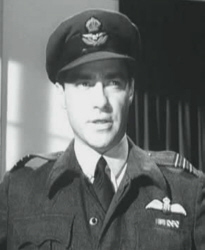 fly boys who actually deliver the pay load.
fly boys who actually deliver the pay load.
It was interesting to see this re-enactment of a piece of World War II history. As for which one is the better story, the fiction or the reality of wartime heroism, well, both are great stories but “The Guns of Navarone” is the better movie that we will still be watching decades hence as a film classic.
Next week's TVO features star Burt Lancaster in "The Swimmer" and "Elmer Gantry" starting at 8pm EST on Saturday Night at the Movies.
Related Reading:
- The story of the Dambusters was redone in a real documentary format in 2001.
- Letting go of vengeance: a wounded police officer tells his story
- Dogged perseverance: Kathy Kreiner, olympic medalist
Pride and Prejudice (1940) and Sense and Sensibility (1995)
Chick Flick à la Austen
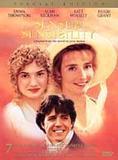 I was in seventh heaven- Two of my favourite Jane Austen novels in one evening on the TVOntario Saturday Night at the Movies. I could not help but be delighted by viewing that old chestnut from 1940, “Pride and Prejudice” with Greer Garson and Laurence Olivier. It was followed by Emma Thompson’s 1995 version of “Sense and Sensibility”. My husband, although he bravely soldiered on through part of the twin bill feature, was not similarly enthusiastic. I was too engrossed in my cinematic voyage to the early part of the 19th century to really notice his waning interest level.
I was in seventh heaven- Two of my favourite Jane Austen novels in one evening on the TVOntario Saturday Night at the Movies. I could not help but be delighted by viewing that old chestnut from 1940, “Pride and Prejudice” with Greer Garson and Laurence Olivier. It was followed by Emma Thompson’s 1995 version of “Sense and Sensibility”. My husband, although he bravely soldiered on through part of the twin bill feature, was not similarly enthusiastic. I was too engrossed in my cinematic voyage to the early part of the 19th century to really notice his waning interest level.
I was enraptured by it all: the scintillating dialogue, the droll comedy, the engaging romance, the period costumes (even if the costumes for "Pride & Prejudice" were from the wrong period in the first film!) – it was all too wonderful. Yes, some of it was just too wonderful to be true. Oh well. Even if the movies were either not true to the period or not representative of the original novels, they still managed to be true to something of the heart of Jane Austen’s stories. Some of us were too carried away to notice the discrepancies anyways.
My favourite version by far of an on-screen version of “Pride of Prejudice” is the 1995 BBC mini-series production with Jennifer Ehle and Colin Firth. That production allowed for a much more leisurely examination of the material from the original novel, being less constrained by the two hour time frame of the Hollywood feature film. The 1940 version did, of course, take certain liberties in order squeeze the Austen story into the ridiculously tight bodice of the feature film, thus showing off certain native attributes of the original book.
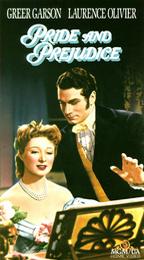 During the “Interviews”, Elsa Solendar, an expert in all things Austen, remarked that in this film version of “Pride and Prejudice”, characters as well as plot have been changed beyond recognition. The most prominent example of this kind of alteration is the penultimate scene of the film. Mr. Darcy treads hard on the heels of his aunt, the Lady Catherine de Bourgh to propose marriage to a most pleasantly surprised Lizzie. As Solendar pointed out, in this 1940s version, the transformation of Lady Catherine into a “grand old gal” giving her belated blessing to the union of the young couple had more to do with the wartime political relations between America and Great Britain than it did with any original intent that Jane Austen may have had in mind in her novel.
During the “Interviews”, Elsa Solendar, an expert in all things Austen, remarked that in this film version of “Pride and Prejudice”, characters as well as plot have been changed beyond recognition. The most prominent example of this kind of alteration is the penultimate scene of the film. Mr. Darcy treads hard on the heels of his aunt, the Lady Catherine de Bourgh to propose marriage to a most pleasantly surprised Lizzie. As Solendar pointed out, in this 1940s version, the transformation of Lady Catherine into a “grand old gal” giving her belated blessing to the union of the young couple had more to do with the wartime political relations between America and Great Britain than it did with any original intent that Jane Austen may have had in mind in her novel.
I found the whole proposal scene between the lovely Miss Greer and Laurence Olivier to be rather stilted and inauthentic. As the couple decides to go out to the garden for a private conference, Olivier, not quite knowing what to do with his white gloves at this point, tosses them to one side. The gesture is in itself utterly charming, entirely appropriate to the film’s action and quintessentially Olivier. It is a scene that works very well in the context of this film. However, Austen’s Mr. Darcy would not and could not have acted in this way at this stage in his relationship with Miss Bennet. It is not Olivier the actor who is stilted. Even the best of actors cannot very well act on what is simply not there in the script.
We may like the ending of the 1940s film well enough. We may even find it highly entertaining. Nonetheless, I can’t help but think that we are getting the short end of the stick when compared with the rich texture and emotional complexity of the original Austen story. But then, what can one expect when one invests a mere two hours in front of a screen versus the rewards of the much more demanding journey of reading the whole novel? I guess the old adage is true: “You gets what you pays for.”
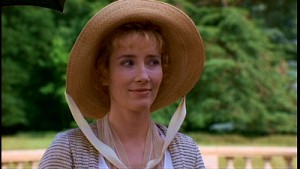 Perhaps Emma Thompson’s screenplay for “Sense and Sensibility” does not suffer from the same problems as the much earlier screenplay of “Pride and Prejudice” written by the eminent Aldous Huxley. Emma Thompson not only does a fine job of providing the script for the movie; she does double duty as a leading lady for the film adaptation. This is quite a talented woman; certainly no passive wallflower.
Perhaps Emma Thompson’s screenplay for “Sense and Sensibility” does not suffer from the same problems as the much earlier screenplay of “Pride and Prejudice” written by the eminent Aldous Huxley. Emma Thompson not only does a fine job of providing the script for the movie; she does double duty as a leading lady for the film adaptation. This is quite a talented woman; certainly no passive wallflower.
The drive and determination that it must have taken for Emma Thompson to undertake such an enterprise betrays how much things have changed for women in the modern era. Unlike her character in the film (Elinor Dashwood) who essentially sits around waiting for the men in her sphere to take action , Emma Thompson shows a great deal of sense and sensibility as well as a good bit of gumption in writing this script and then playing the part of the somewhat stifled elder sister.
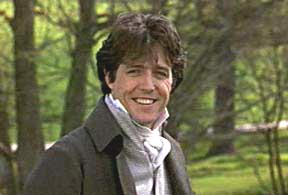 Hugh Grant as the bumbling suitor of the first sister, Mr. Edward Ferrars, is affable enough. Greg Wise as Marianne’s love interest, Willoughby , is dashing enough. Alan Rickman, as the rather mysterious man in the background, is surprisingly suitable enough maintain our interest. While it is true that these men seem to disappear off to London with amazing frequency and equally amazingly little explanation, we are very glad to see them reappear on the screen. It livens things up.
Hugh Grant as the bumbling suitor of the first sister, Mr. Edward Ferrars, is affable enough. Greg Wise as Marianne’s love interest, Willoughby , is dashing enough. Alan Rickman, as the rather mysterious man in the background, is surprisingly suitable enough maintain our interest. While it is true that these men seem to disappear off to London with amazing frequency and equally amazingly little explanation, we are very glad to see them reappear on the screen. It livens things up.
How frightfully boring it must have been for gentlewomen in those days, sitting around in dreary parlours toiling over useless sewing projects, arranging and rearranging the flowers, reading a limited selection of books and talking endlessly to one’s relatives. Finding a good match in marriage and becoming involved in others’ matrimonial goings on was practically the only event of consequence in such a woman’s life.
Circumstances, attitudes and opportunities for the modern young woman may have changed vastly over the years. However, the need to find a good and suitable match for a lifetime partner has not changed. Having been a confidante in affairs of the heart for more than one young woman of this generation, I can vouch for the fact that things are not necessarily less complicated for today’s young ladies. Problems and impediments of all types do arise. Sometimes there is a glorious happy ending and a blissful union and sometimes there is heartbreak and confusion.
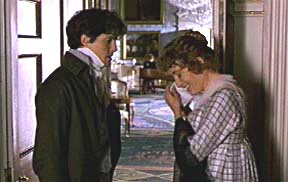 Elsa Solendar in the “Interviews” points out that the revolutionary thing in its day for a Jane Austen novel was that the heroine made perhaps the most important decision of her life for herself. It was a decision made ultimately without the collusion of relatives or by the pressures of society. At the end of the day it was a matter decided largely as a function of the character of the individuals involved. The decision showed what kind of character each participant possessed, for good or for ill.
Elsa Solendar in the “Interviews” points out that the revolutionary thing in its day for a Jane Austen novel was that the heroine made perhaps the most important decision of her life for herself. It was a decision made ultimately without the collusion of relatives or by the pressures of society. At the end of the day it was a matter decided largely as a function of the character of the individuals involved. The decision showed what kind of character each participant possessed, for good or for ill.
Austen’s novel is fashioned in such a way that both Elinor and Marianne demonstrate growth in character. In spite of the limitations that women of their class and their day were offered, Austen shows that it is possible to reveal strength of mind and of character. And good character is always in fashion, no matter what the hemlines or bodice brocades may be like in a particular year.
Guys Night In next week on TVO: "The Guns of Navarone" and "The Dam Busters"
Suggested Reading:
- Don’t you just hate it! Classic romance novel ruined by a farting horse. IMDb trivia for Sense and Sensibility.
- Good sense in an age of sensuality – Real Love or Infatuation?
- Antiquated social practices and the modern miss: courtship
- Jane Austen an old maid? On staying single when everyone’s getting married
Gun Crazy (1949 ) and Bonnie and Clyde (1967)
This week on TVOntario a replay of Violence in the Movies. Read a past review of "Gun Crazy" and "Bonnie and Clyde".

The Bonnets are Coming! On TVOntario this Saturday Night at the Movies on June 10th at 8pm EST see two of your favourite "bonnet" movies: "Pride and Prejudice" (1940) with Greer Garson and Laurence Olivier and "Sense and Sensibility" (1995) with Emma Thompson and Alan Rickman.



